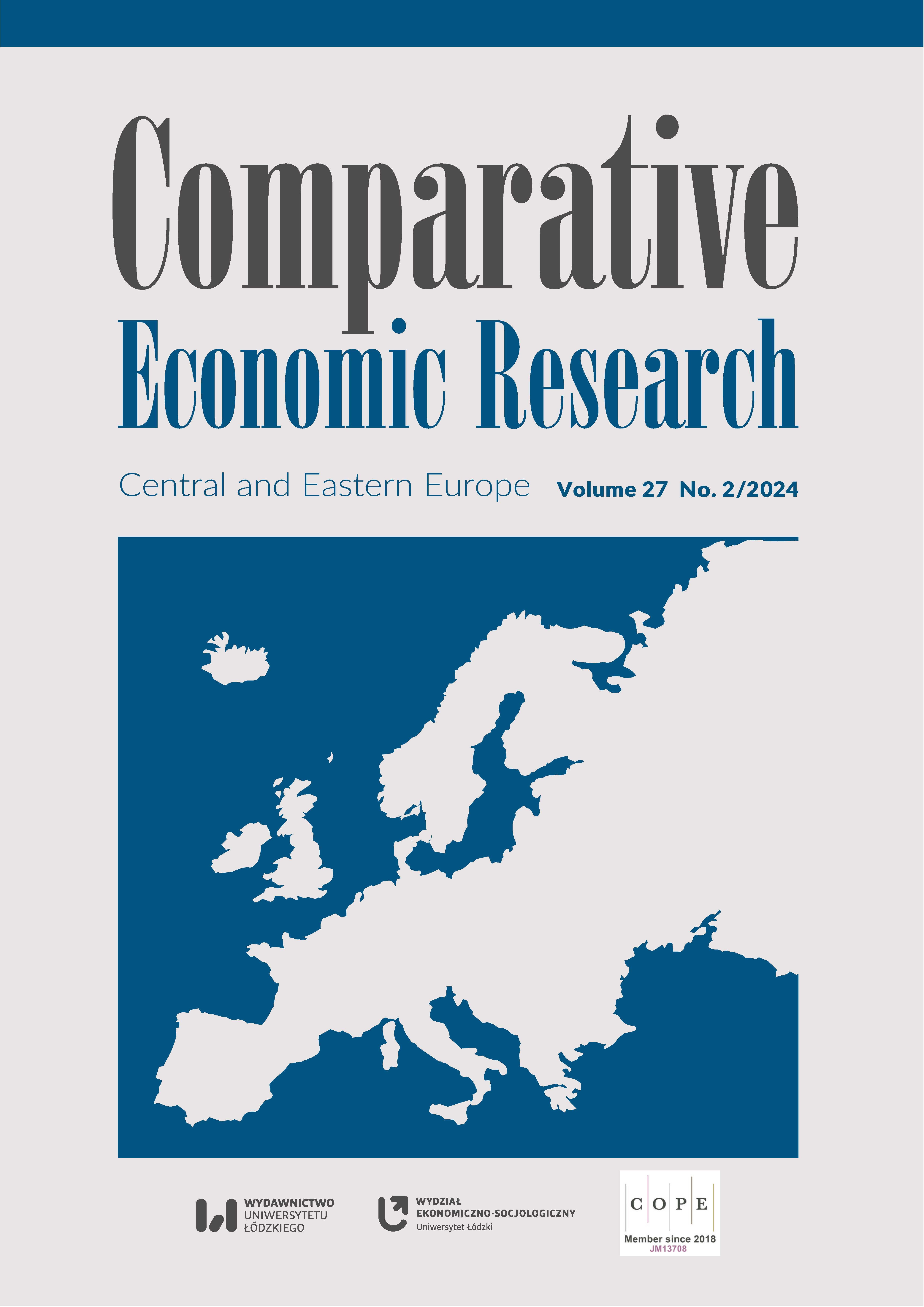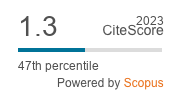Comparing Links between Topic Trends and Economic Indicators in the German and Polish Academic Literature
DOI:
https://doi.org/10.18778/1508-2008.27.10Keywords:
topic modelling, text analysis, latent Dirichlet allocation, Granger causality, topic trendsAbstract
The popularity of econometric analyses that include variables obtained from text mining is growing rapidly. A frequently applied approach is to identify topics from large corpora, which makes it possible to determine trends that reflect the changing relevance of topics over time. We address the question of whether such topic trends are linked to quantitative economic indicators typically used for analysing the objects described by a topic. The analysis is based on academic economic articles from Poland and Germany from 1984 to 2020. There is a specific focus on whether relationships between topic trends and indicators are similar across national economies. The connection between topic trends and indicators is analysed using vector autoregressive models and Granger causality tests.
Downloads
References
Baker, S.R., Bloom, N., Davis, S.J. (2016), Measuring Economic Policy Uncertainty, “The Quarterly Journal of Economics”, 131 (4), pp. 1593–1636, https://doi.org/10.1093/qje/qjw024
Google Scholar
DOI: https://doi.org/10.1093/qje/qjw024
Bergeaud, A., Potiron, Y., Raimbault, J. (2017), Classifying patents based on their semantic content, “PLOS ONE”, 12 (4), pp. 1–22, https://doi.org/10.1371/journal.pone.0176310
Google Scholar
DOI: https://doi.org/10.1371/journal.pone.0176310
Blei, D.M., Ng, A.Y., Jordan, M.I. (2003), Latent Dirichlet allocation, “Journal of Machine Learning Research”, 3, pp. 993–1022.
Google Scholar
Bystrov, V., Naboka, V., Staszewska Bystrova, A., Winker, P. (2022), Cross Corpora Comparisons of Topics and Topic Trends, “Journal of Economics and Statistics”, 242 (4), pp. 433–469, https://doi.org/10.1515/jbnst-2022-0024
Google Scholar
DOI: https://doi.org/10.1515/jbnst-2022-0024
Dybowski, T.P., Adämmer, P. (2018), The economic effects of U.S. presidential tax communication: Evidence from a correlated topic model, “European Journal of Political Economy”, 55, pp. 511–525, https://doi.org/10.1016/j.ejpoleco.2018.05.001
Google Scholar
DOI: https://doi.org/10.1016/j.ejpoleco.2018.05.001
Ellingsen, J., Larsen, V.H., Thorsrud, L.A. (2022), News media versus FRED MD for macroeconomic forecasting, “Journal of Applied Econometrics”, 37 (1), pp. 63–81, https://doi.org/10.1002/jae.2859
Google Scholar
DOI: https://doi.org/10.1002/jae.2859
Hansen, S., McMahon, M., Prat, A. (2017), Transparency and Deliberation Within the FOMC: A Computational Linguistics Approach, “The Quarterly Journal of Economics”, 133 (2), pp. 801–870, https://doi.org/10.1093/qje/qjx045
Google Scholar
DOI: https://doi.org/10.1093/qje/qjx045
Huang, A.H., Lehavy, R., Zang, A.Y., Zheng, R. (2018), Analyst Information Discovery and Interpretation Roles: A Topic Modeling Approach, “Management Science”, 64 (6), pp. 2833–2855, https://doi.org/10.1287/mnsc.2017.2751
Google Scholar
DOI: https://doi.org/10.1287/mnsc.2017.2751
Kilian, L. (2009), Not All Oil Price Shocks Are Alike: Disentangling Demand and Supply Shocks in the Crude Oil Market, “American Economic Review”, 99 (3), pp. 1053–1069, https://doi.org/10.1257/aer.99.3.1053
Google Scholar
DOI: https://doi.org/10.1257/aer.99.3.1053
Kilian, L., Lütkepohl, H. (2017), Structural Vector Autoregressive Analysis, “Themes in Modern Econometrics”, Cambridge University Press, Cambridge.
Google Scholar
DOI: https://doi.org/10.1017/9781108164818
Larsen, V.H., Thorsrud, L.A. (2022), Asset returns, news topics, and media effects, “The Scandinavian Journal of Economics”, 124 (3), pp. 838–868, https://doi.org/10.1111/sjoe.12469
Google Scholar
DOI: https://doi.org/10.1111/sjoe.12469
Latifi, A., Naboka Krell, V., Tillmann, P., Winker, P. (2023), Fiscal policy in the Bundestag: Textual analysis and macroeconomic effects, MAGKS papers on economics, Philipps Universität Marburg, Faculty of Business Administration and Economics, Department of Economics, Marburg.
Google Scholar
DOI: https://doi.org/10.2139/ssrn.4407954
Lenz, D., Winker, P. (2020), Measuring the diffusion of innovations with paragraph vector topic models, “PLOS ONE”, 15 (1), pp. 1–18, https://doi.org/10.1371/journal.pone.0226685
Google Scholar
DOI: https://doi.org/10.1371/journal.pone.0226685
Lüdering, J., Winker, P. (2016), Forward or Backward Looking? The Economic Discourse and the Observed Reality, “Journal of Economics and Statistics”, 236 (4), pp. 483–515, https://doi.org/10.1515/jbnst-2015-1026
Google Scholar
DOI: https://doi.org/10.1515/jbnst-2015-1026
Savin, I., Ott, I., Konop, C. (2022), Tracing the evolution of service robotics: Insights from a topic modeling approach, “Technological Forecasting & Social Change”, 174, 121280, https://doi.org/10.1016/j.techfore.2021.121280
Google Scholar
DOI: https://doi.org/10.1016/j.techfore.2021.121280
Thorsrud, L.A. (2020), Words are the new numbers: A newsy coincident index of the business cycle, “Journal of Business & Economic Statistics”, 38 (2), pp. 393–409, https://doi.org/10.1080/07350015.2018.1506344
Google Scholar
DOI: https://doi.org/10.1080/07350015.2018.1506344
Downloads
Published
How to Cite
Issue
Section
License

This work is licensed under a Creative Commons Attribution-NonCommercial-NoDerivatives 4.0 International License.
Funding data
-
Deutsche Forschungsgemeinschaft
Grant numbers WI 2024/8-1 -
Narodowe Centrum Nauki
Grant numbers Beethoven Classic 3: UMO–2018/31/G/HS4/00869











